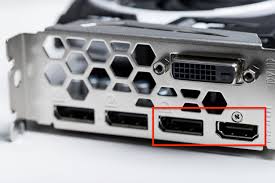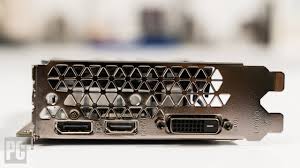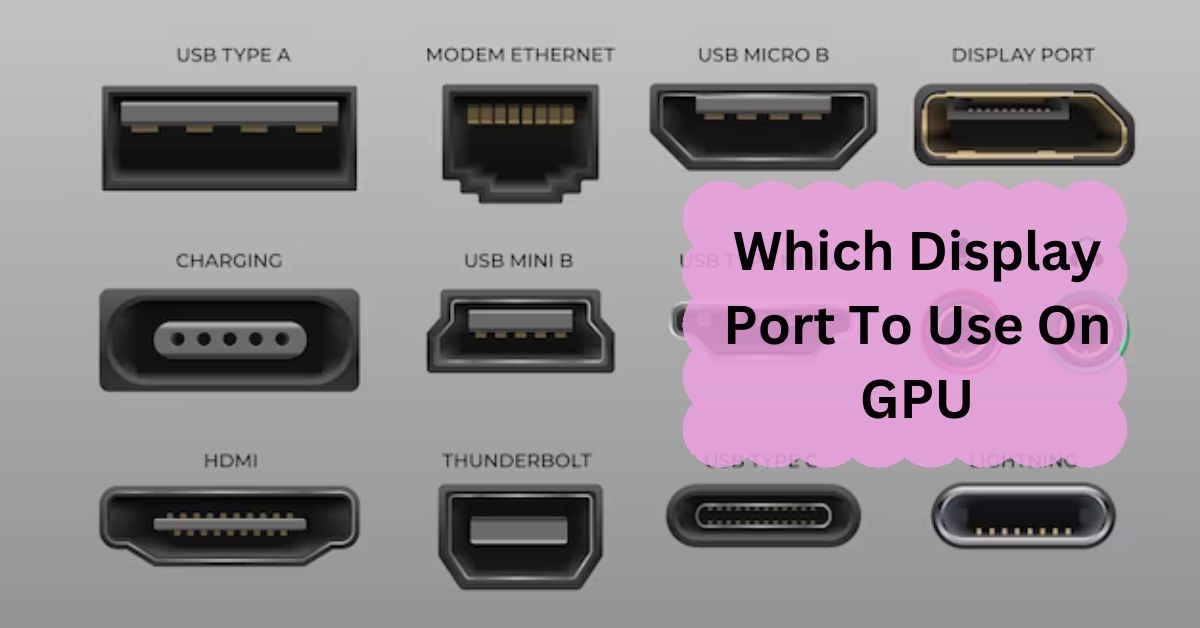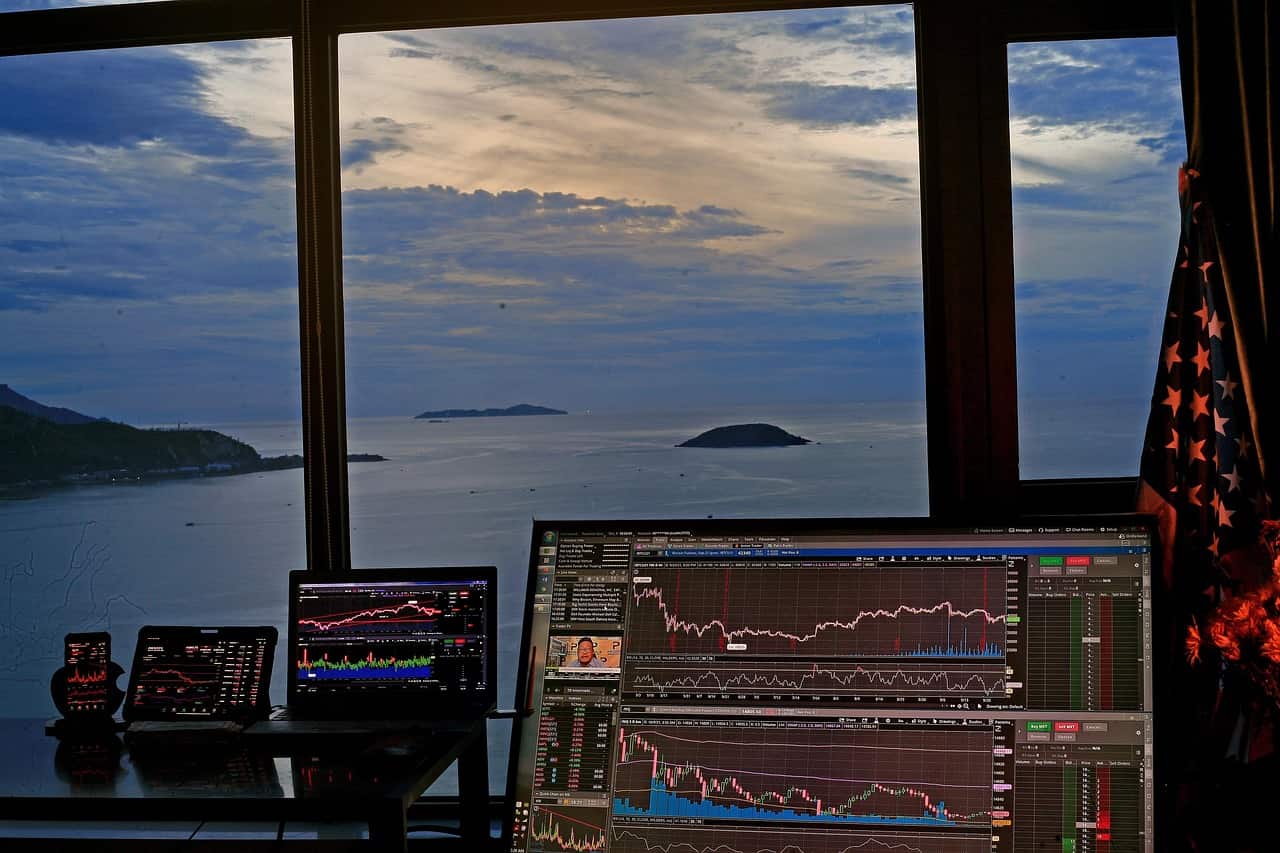When setting up your computer or gaming system, choosing the right display port on your GPU (Graphics Processing Unit) can make a big difference in the quality of your visuals. With several options available, it’s essential to know which one to use.
For most users, the best display port on a GPU is usually the one labeled as “DisplayPort” or “HDMI.” If your monitor supports DisplayPort, use it for better refresh rates. HDMI is also good, especially for TVs or older monitors.
In this article, we will discuss “Which Display Port To Use On GPU”.
Table of Contents
Understanding the Different Display Ports:
Before deciding which display port to use, it’s crucial to understand the options available. Most GPUs come with multiple display ports, each offering different capabilities.

1. HDMI (High-Definition Multimedia Interface):
- Common Use: Most commonly used for TVs, monitors, and some gaming consoles.
- Advantages: HDMI is widely available and supports both audio and video in a single cable. It’s a reliable option for most users, especially if you are connecting to a TV or an older monitor.
- Limitations: HDMI versions vary. Older versions (1.4) support lower resolutions and refresh rates, while newer versions (2.0 and 2.1) offer 4K at 60Hz or higher and even 8K.
2. DisplayPort:
- Common Use: Primarily used for computer monitors and is favored by gamers and professionals who need high performance.
- Advantages: DisplayPort is designed specifically for high-performance displays. It supports higher resolutions, refresh rates, and multiple monitors from a single port. DisplayPort 1.4 and 2.0 are the latest versions, offering up to 8K resolution and 240Hz refresh rates.
- Limitations: While powerful, DisplayPort is less common in TVs and older monitors.
3. DVI (Digital Visual Interface):
- Common Use: Mostly found on older monitors and GPUs.
- Advantages: DVI can handle high resolutions (up to 2560×1600) and is still a good choice for older setups.
- Limitations: DVI does not carry audio, and it is gradually becoming obsolete in favor of HDMI and DisplayPort.
4. VGA (Video Graphics Array):
- Common Use: Older displays and projectors.
- Advantages: VGA is an analog signal, which means it can work with very old monitors.
- Limitations: VGA offers the lowest video quality among the ports mentioned and is only suitable for older, low-resolution displays.
Which Display Port Should You Use?
The best display port to use on your GPU depends on your specific needs, such as the type of monitor you have, the quality of the display you want, and what you are using your computer for.
1. For Gaming:
If you’re a gamer, DisplayPort is usually the best choice. It supports higher refresh rates and resolutions, making your games look smoother and more detailed.
DisplayPort also supports technologies like G-Sync and FreeSync, which reduce screen tearing and stuttering, enhancing your gaming experience.
If your monitor does not support DisplayPort, HDMI 2.0 or 2.1 is a good alternative, especially if you are using a 4K TV as your display.
2. For Professional Work:
For professionals who need accurate colors and high resolutions, such as graphic designers or video editors, DisplayPort is again the top choice. It provides better color accuracy and supports higher resolutions, which are essential for detailed work.
If you need to connect multiple monitors, DisplayPort’s Multi-Stream Transport (MST) feature allows you to daisy-chain multiple monitors, reducing cable clutter and simplifying your setup.
3. For General Use:
If you’re using your computer for general tasks like browsing, watching videos, or office work, HDMI is usually sufficient. It’s widely supported by most monitors and TVs, and it can deliver good-quality video and audio.
DVI can also be used if your monitor is older and doesn’t have HDMI or DisplayPort.
4. For Older Equipment:
If you have older monitors or projectors, VGA or DVI might be your only options. While they won’t offer the best video quality, they are still functional for basic tasks.
Tips for Choosing the Right Display Port:
1. Check Your Monitor’s Ports:
Before deciding, check which ports your monitor or TV supports. There’s no point in choosing a DisplayPort if your monitor only has HDMI.
2. Consider Your GPU’s Capabilities:
Some GPUs have multiple ports but may support different resolutions and refresh rates on each. Make sure to choose the port that aligns with your GPU’s best capabilities.
3. Think About Future-Proofing:
If you plan to upgrade your monitor or TV in the future, choosing a port that supports higher resolutions and refresh rates, like DisplayPort or HDMI 2.1, might be a good idea.
4. Don’t Forget Audio:
If you want audio and video through one cable, HDMI is a better choice than DisplayPort or DVI, as it supports both. DisplayPort also supports audio, but not all monitors with DisplayPort inputs have built-in speakers.
Can you use 2 display ports on GPU?

Yes, you can use 2 display ports on a GPU if it has multiple ports. This allows you to connect two monitors for a dual-display setup, giving you more screen space for work or gaming.
Can DisplayPort cable damage GPU?
No, a DisplayPort cable won’t damage your GPU if it’s good quality. However, using a very cheap or damaged cable might cause issues like flickering or no signal. Always use a reliable cable to ensure your GPU works properly.
Which display port to use on gpu laptop?
For a GPU laptop, use the DisplayPort or HDMI port available on the laptop. If your monitor supports DisplayPort, use it for better performance. HDMI is also good, especially for connecting to TVs or older monitors.
Which display port to use on gpu gaming?
For gaming, use the DisplayPort on your GPU for the best performance. DisplayPort supports higher refresh rates and better graphics quality, making it ideal for smooth gaming. If your monitor doesn’t have DisplayPort, HDMI is a good alternative.
Does it matter which display port I use on GPU?
Yes, it can matter which DisplayPort you use on your GPU. Using DisplayPort is recommended for the best performance, as it supports higher refresh rates and better image quality. If you have multiple ports, choose the one best suited for your monitor’s capabilities.
Does which DisplayPort matter on GPU?
Yes, which DisplayPort you use on your GPU can matter. Using a DisplayPort is best for high performance, especially in gaming or professional work.
It supports better refresh rates and image quality. Choose the port that matches your monitor’s features for the best results.
Which port do I use on a GPU?
Use the port on your GPU that matches your monitor’s connection. For the best performance, use DisplayPort if available.
HDMI is also a good option, especially for TVs or older monitors. Choose the port that fits both your GPU and monitor for the best display.
Should I plug my DisplayPort into my GPU?
Yes, you should plug your DisplayPort into your GPU for the best performance. This allows you to use high-quality graphics and better refresh rates, especially for gaming. Ensure your monitor supports DisplayPort to get the best results.
Should I use HDMI or DisplayPort on GPU?
Use DisplayPort on your GPU for the best performance, especially in gaming, as it supports higher refresh rates and better image quality.

HDMI is also good and works well for most tasks, but DisplayPort is generally preferred for high-performance and advanced features.
FAQs:
1. Which display port is best for gaming?
DisplayPort is the best choice for gaming due to its higher refresh rates, better resolution support, and compatibility with G-Sync and FreeSync technologies.
2. Can I use HDMI for my 4K monitor?
Yes, you can use HDMI for a 4K monitor, but make sure to use at least an HDMI 2.0 or 2.1 cable to support 4K resolution at 60Hz or higher.
3. What’s the difference between HDMI and DisplayPort?
HDMI is more common and supports both audio and video in one cable, making it ideal for general use. DisplayPort offers better performance for high-resolution and high-refresh-rate displays, making it preferable for gaming and professional work.
4. Is DVI still a good option?
DVI is a good option for older monitors and GPUs, but it’s gradually being replaced by HDMI and DisplayPort due to its lack of audio support and lower maximum resolution.
5. Can I use multiple monitors with DisplayPort?
Yes, DisplayPort supports Multi-Stream Transport (MST), which allows you to connect multiple monitors using a single DisplayPort output, reducing cable clutter and simplifying your setup.
6. What resolution and refresh rate can I get with DisplayPort 1.4?
DisplayPort 1.4 supports up to 8K resolution at 60Hz or 4K resolution at 120Hz, making it ideal for high-quality, high-refresh-rate displays.
7. Can I use an adapter to connect DisplayPort to HDMI?
Yes, you can use an adapter to connect DisplayPort to HDMI. However, ensure the adapter supports the resolution and refresh rate you need, as some adapters may limit performance.
Conclusion:
In conclusion, the display port you should use on your GPU depends on your specific needs. For gaming and professional work, DisplayPort is the best choice due to its superior performance and features. For general use, HDMI is more than adequate and widely supported. If you’re using older equipment, DVI or VGA might be necessary, but they are becoming outdated.


